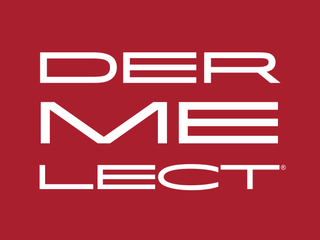Whether your skin is looking lackluster and dull or you’re struggling from adult acne, exfoliation is truly the magic solution for better skin. Unfortunately, there’s a lot of confusion out there about how to effectively exfoliate and which type of exfoliant is best!
So today I’m going to break down why adding an exfoliant to your routine is the absolute key to having glowing, baby-soft skin, and how you can start NOW!
If you’ve been wondering “what is exfoliation?”, keep reading to find out!
What is Exfoliation?
The protective outer-most layer of our skin (AKA the stratum corneum) is made up of dead skin cells that are replaced every two weeks. At least, that’s how it’s supposed to work.
But as we get older, this process slows down – a lot. Dead skin cells build up on the surface of our skin, leading to problems like fine lines, wrinkles, breakouts, and dullness. Exfoliation helps to remove these dead skin cells, restoring this renewal process to its ideal length and keeping your complexion new!
Key benefits include:
- Unclogs pores
- Fades age spots
- Minimizes fine lines and wrinkles
- Improves absorption and performance of other skincare treatments
Physical vs. Chemical Exfoliation
Now that we know that exfoliation offers all kinds of awesome benefits for your skin, how exactly do we go about doing it?
Basically, there are two types of exfoliants: physical and chemical. Both have their pros and cons, so your choice will really depend on just what kind of results you are trying to achieve. But if you don’t want to choose, you can also use a combination of the two (more on that later).
-
Physical Exfoliation: Pros and Cons
Physically exfoliants manually buff away dead skin cells. Scrubs, face brushes, and washcloths are all examples of physical exfoliants.
I love physical exfoliants because they provide immediate results, and they also tend to cause less irritation than chemical exfoliants. On the other hand, it’s quite easy to get a little overzealous and scrub too hard with physical exfoliants, thus damaging the skin.
Keep in mind, a few minutes of gentle exfoliation will do you more good than 30 seconds of ravaging your skin.
-
Chemical Exfoliation: Pros and Cons
Chemical exfoliants break down the bonds between dead skin cells to “unstick” them and slough them away. They also improve the rate at which new skin cells are produced, increasing skin cell turnover. I like chemical exfoliants because they provide more even exfoliation than physical, and they also have great anti-aging effects. The most popular types of chemical exfoliants are hydroxy acids, retinoids, and enzymes.
But you have to be careful with chemical exfoliants (especially if you have sensitive skin) because there’s a higher chance of experiencing an allergic reaction. Always do a spot test with a chemical exfoliant before applying the product to your whole face. There’s nothing worse than showing up to a big event with splotchy, red skin from an allergic reaction!
How to Exfoliate
So, which is better for gaining radiant skin - chemical or physical exfoliants? I say, why choose? Especially when there are products that offer both types for the best of both worlds.
Our MICROFACIAL Exfoliating Masque combines a physical exfoliant (pumice) with a chemical exfoliant (salicylic acid) to reveal a more radiant complexion instantly – without irritating skin. In seconds of applying, kaolin clay is activated to draw out toxins from the skin, while salicylic acid gets to work right away in removing debris, dirt, and makeup from your pores for a true deep clean. I love to leave mine on for about 10 minutes while all of this goodness goes to work on my skin, but if you're in a rush, you can wash it off in even less than two minutes. Once removed, a natural blend of oils will leave the skin feeling hydrated and nourished while THD Ascorbate, the gold standard of Vitamin C, naturally brightens your skin for a luminous glow.
If you're new to exfoliating, start by using MICROFACIAL once per week and gradually work your way up to more frequent exfoliating sessions. I use mine at least three times a week, but not more than that. The best thing is that we've taken the guesswork out. Just massage in and enjoy!
I’m telling you, after just one use, your skin will feel softer and look brighter. And I’m not alone! We’ve had incredible feedback from our customers experiencing the same miraculous results. Read and see how people are just as obsessed!
“This is the absolute best facial scrub on the market.” – Dora R.
“I did a facial on my boyfriend and myself. The results are insane. My skin has never felt softer! It’s so smooth. I can’t believe I’ve been sleeping on this for so long!” – Ashley B.
“Just recently started using it and literally had almost instant results! The same week I started to use it not only did I notice a difference in my skin but so did my friends. I got so many compliments on my skin. I struggle with finding a good skin product to actually take care of all my problems but after buying this, my skin actually looks a lot brighter and muuuuuuch clearer!” - Justine
Now, are you ready to uncover your glow? Let us know your thoughts on exfoliation in the comments!




